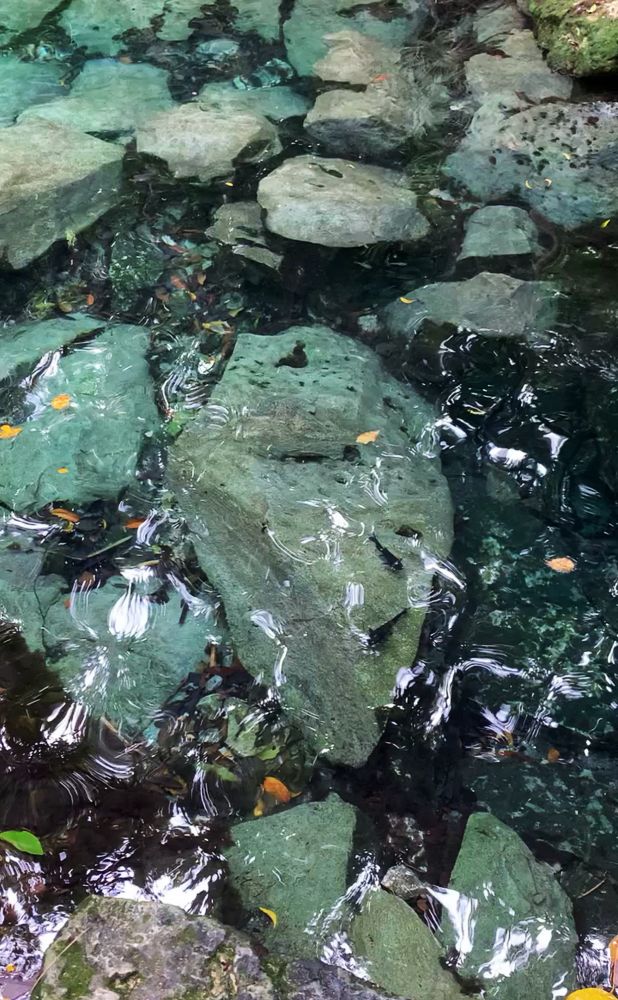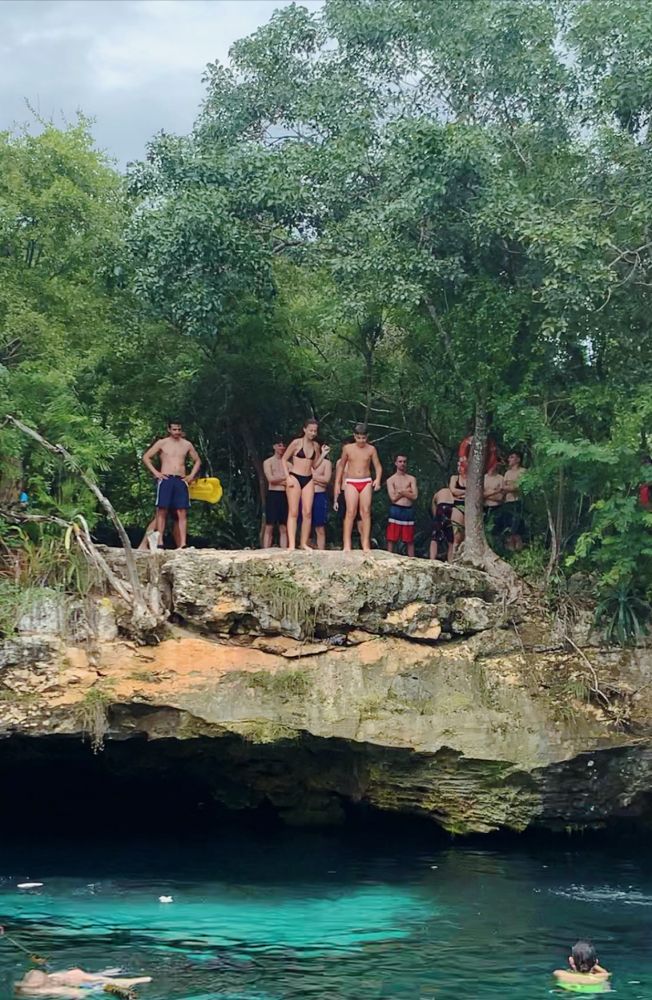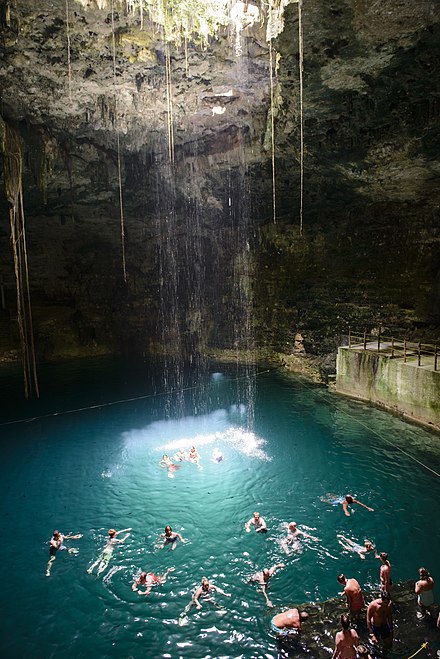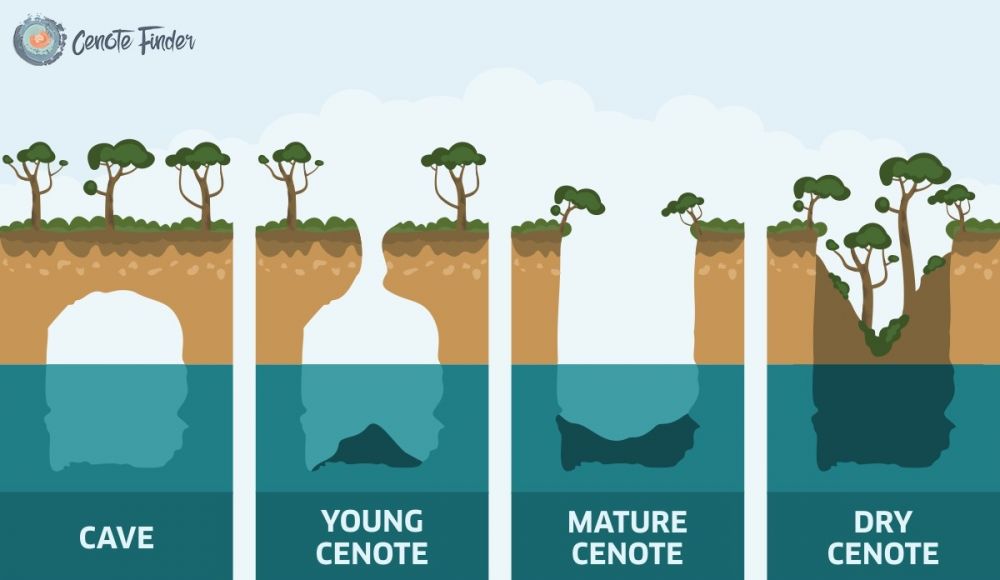坑?天坑,cenotes!
We recently visited Mexico during the holidays. What impressed me the most were not the white sands, the turquoise sea water, the bunch of coconuts hanging on the palm trees, but the cenotes!
What are cenotes? A cenote is a natural pit or a sinkhole,resulting from the collapse of limestone bedrock that exposes groundwater.
The cenote we visited was Cenote Azul, one of the largest and most beautiful cenotes located at Riviera Maya. For unknown reasons, I am not able to upload the short videos to the post. The following poor-quality pictures are from screenshots of videos I took, but you may still notice the crystal-clear water of the cenote. "水至清則無魚”,however, I did see a couple of fish swim in the water!Are you able to identify them?
Lots of people jumped into the cenote to swim which was big fun! Some of them threw their sandals into the water first, and some of them jumped in the water together, and some of them still took selfie videos while jumping. The camera must be waterproof!:)
If someday you have a chance to visit Mexico, I highly recommend visiting the cenotes. The crystal clear water is going to cleanse your mind and your heart. It is going to refresh you both physically and spiritually!


*********
The following are from Wiki:
A cenote (English: /s??no?ti/ or /s??no?te?/; Latin American Spanish: [se?note]) is a natural pit, or sinkhole, resulting from the collapse of limestone bedrock that exposes groundwater. The term originated on the Yucatán Peninsula of Mexico, where cenotes were commonly used for water supplies by the ancient Maya, and occasionally for sacrificial offerings. The term derives from a word used by the lowland Yucatec Maya—ts?ono?ot—to refer to any location with accessible groundwater.[2][3]
In Mexico the Yucatán Peninsula alone has an estimated 10,000 cenotes,[4] water-filled sinkholes naturally formed by the collapse of limestone, located across the peninsula. Some of these cenotes are at risk from the construction of the new tourist Maya Train.[4]
Cenotes are common geological forms in low-altitude regions, particularly on islands, coastlines, and platforms with young post-Paleozoic limestone with little soil development. The term cenote, originally used only to describe the features in Yucatán, has since been applied to similar karst features in other countries such as Cuba, Australia, and the United States.


